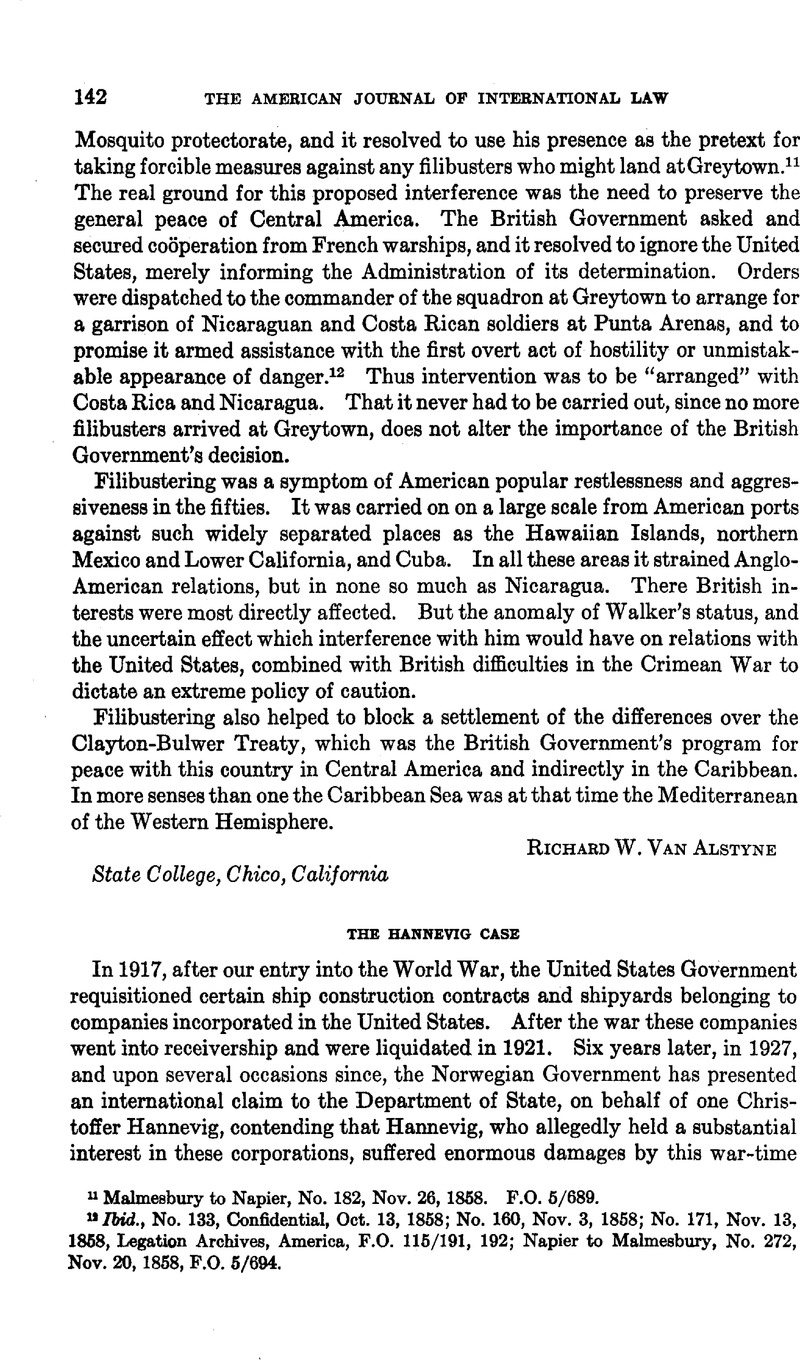No CrossRef data available.
Published online by Cambridge University Press: 12 April 2017

1 Dept. of State Press Releases, June 30, 1937, Vol. XVII, No. 405, pp. 4–6. Quoted matter herein not otherwise cited is taken from this press release.
2 Report of the Agent for the United States, American and Panamanian General Claims Arbitration (1934), pp. 3–29.
3 U. S. Executive Agreement Series, No. 57, this JOURNAL, Supp., p. 57; Convention of Sept. 8, 1923, U. S. Treaty Series, No. 678, this JOURNAL, Supp., Vol. 18 (1924), p. 147.
4 On Nov. 22,1937, the Dept. of State advised the writer that “while the Norwegian Government has now accepted, in principle, the proposed procedure outlined in the Secretary's note of June 18, it has suggested several modifications thereof which will doubtless become the subject of further diplomatic negotiations before an agreement is definitely concluded.”
5 Judge Huber stated the general rule in the Palmas Island Arbitration as follows: “However desirable it may be that evidence should be produced as complete and at as early a stage as possible, it would seem to be contrary to the broad principles applied in international arbitrations to exclude a limine, except under the explicit terms of a conventional rule, every allegation made by a Party as irrelevant, if it is not supported by evidence, and to exclude evidence relating to such allegations from being produced at a later stage of the procedure.” (Award, p. 19; this JOURNAL, Vol. 22 (1928), pp. 867, 878.)
6 Article Sixth (d). It reads in full: “With the Memorial the claimant Government shall file all the evidence on which it intends to rely. With the Answer the respondent Government shall file all the evidence upon which it intends to rely. No further evidence shall be filed by either side except such evidence, with the Brief, as rebuts evidence filed with the Answer. Such evidence shall be strictly limited to evidence in rebuttal and there shall be explained at the beginning of the Brief the alleged justification for the filing thereof. If the other side desires to object to such filing, its views may be set forth in the beginning of the Reply Brief, and the Commissioners, or the Umpire, as the case may require, Bhall decide the point, and if it is decided that the evidence is not in rebuttal to evidence filed with the Answer, the additional evidence shall be entirely disregarded in considering the merits of the claim.
“The Commissioners may at any time order the production of further evidence.”
7 Under the 1934 General Mexican Protocol the Commissioners could order the production of further evidence at any time. Article Sixth (d).
8 “The Palmas Island Arbitration,” this Journal, loc. cit., pp. 735, 751.
9 Hunt, op cit., pp. 22–23.
10 See Lauterpacht, , Private Law Sources and Analogies of International Law, pp. 65–67, and cases there cited.Google Scholar
11 The first step being the one referred to in the 1934 General Mexican Protocol of 1934.